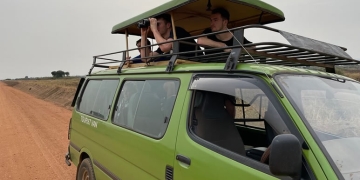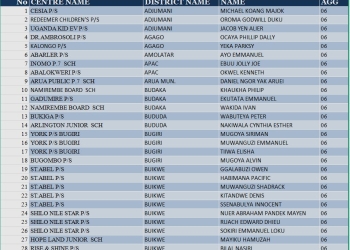
Rising majestically along the Uganda-Congo border, Mountain Rwenzori is more than just a stunning natural wonder – it’s a cornerstone of economic prosperity for the people living in the Rwenzori region.
The mountain range has become a significant source of income, employment, and development for local communities, driven by tourism, agriculture, and conservation efforts.
Tourism has emerged as a vital economic driver, with visitors from around the globe drawn to the mountain’s towering peaks and unique alpine flora and fauna. Local guides, porters, and artisans benefit from the influx of tourists, while restaurants, shops, and transportation services have sprung up to meet the demand.

For adventure seekers, Mountain Rwenzori offers a range of exciting activities. Hiking expeditions to the summit of Margherita, the highest peak, are a popular challenge.
The Rwenzori Mountaineering Service (RMS) offers guided climbs, providing employment for local guides and porters. The RMS also works to promote sustainable tourism practices and protect the mountain’s fragile environment.
In addition to hiking, the mountain hosts the annual Mt. Rwenzori Run, organized by Tusker Lager.

The event attracts runners from across the country and beyond, boosting local businesses and promoting the region’s natural beauty.
Agriculture is another significant economic activity, with the fertile slopes of Mount Rwenzori ideal for crops like coffee, bananas, and potatoes.
Coffee has become a lucrative cash crop, with Rwenzori coffee gaining recognition for its quality and flavor. Agricultural cooperatives have enhanced productivity and profitability, ensuring sustainable livelihoods for farming communities.

Conservation efforts have preserved the region’s unique biodiversity and created opportunities for eco-tourism and research. Environmental conservation programs have provided jobs in park management, wildlife protection, and community-based conservation projects, promoting sustainable practices among the local population.
The Rwenzori Mountains National Park, a UNESCO World Heritage Site, is a prime example of conservation efforts.
The park is home to a diverse range of flora and fauna, including the rare Rwenzori leopard and the majestic Rwenzori turaco. Visitors can explore the park’s trails, waterfalls, and scenic vistas, supporting conservation efforts and local communities.
Despite the economic benefits, the region faces challenges like climate change and infrastructure development. Melting glaciers and changing weather patterns affect both tourism and agriculture, while poor roads and communication networks hinder access to markets and services.
However, the resilience and determination of the Rwenzori people shine through.
Local initiatives, such as the Rwenzori Sustainable Tourism Association, work to promote sustainable practices and support community development. The association brings together local stakeholders to share knowledge, resources, and expertise, ensuring that tourism benefits the local community.

Mountain Rwenzori stands as a beacon of economic hope and resilience for the people of the Rwenzori region. Its natural beauty and resources have unlocked numerous opportunities, transforming lives and driving development.
As the region continues to embrace sustainable practices and innovative solutions, the economic benefits of Mount Rwenzori are set to grow, ensuring a brighter future for its inhabitants.

















